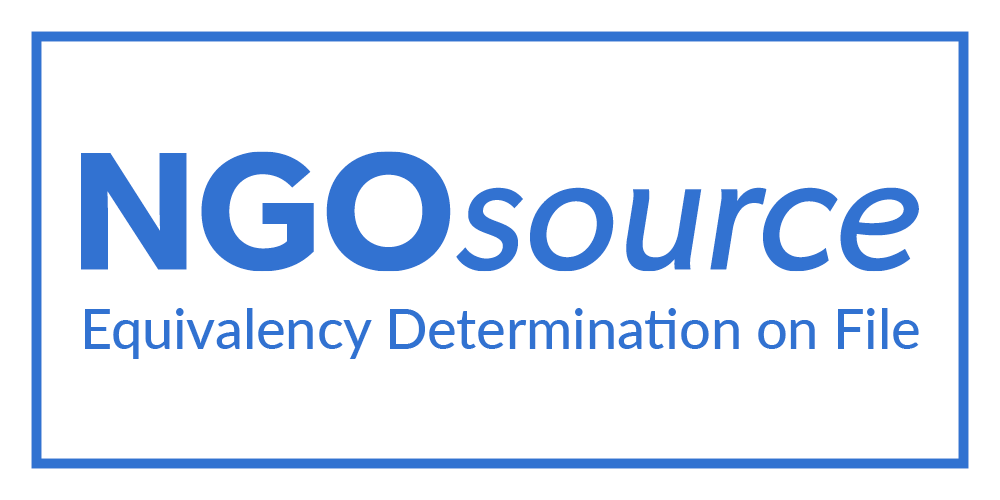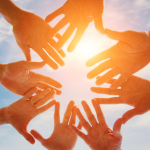In 2021, the Indonesian arts scene has been abuzzed with Non-Fungible Token (NFT). NFT became a new way of doing arts during the pandemic. This phenomenon has also been in the radar of various artists, including members of the Koalisi Seni such as the Ganara Mari Berbagi Seni Foundation and IndoArtNow.
NFT is a crypto technology in the blockchain that functions like a digital certificate. NFT has a token in the form of a unique digital code to be used by parties who have digital artworks, whether in the form of photos, videos, images, and even memes. NFT arts users are increasing due to the various potential benefits for artists in the blockchain scene.
Founders of Ganara, Tita Djumaryo and Ranald Indra, viewed NFT as a great opportunity for artists to disseminate their work. In the world of fine arts, for example, new artists often must face challenges in networking, accessing distribution networks and gender inequality. Through NFT, such limits are almost non-existent. Everyone can access and buy works of artists from various regions. According to them, “NFT can be one of the choices for artists to improve financial conditions during the pandemic.”
In this NFT scene, Tita and Ranald assumed positions as educators. They wanted Ganara to be a platform for artists to learn about NFT before taking a leap into the new world. One of their forms of education is being a speaker in online discussions, such as the Bank Mandiri talk show on “The Future of the Art Industry with NFT” on 23 September 2021.
Ganara also plans to help artists who want to enter the world of NFT by digitizing their works, since mastering technology is also a challenge for many artists. Digitization is done by converting physical works into digital versions. Various modifications — both in terms of movement , dimensions, and format — were also made to make the work more interesting, so that the possibility of selling it was higher.
Another challenge is related to the initial costs that must be borne by the artist. These fees include minting fees, listing fees, commissions, and transaction fees. Tita and Ranald are seeking to engage marketplaces and third parties to address these financial challenges.
Meanwhile, IndoArtNow initiated the IndoArtNowNFT community, a network for Indonesian NFT creators and collectors. IndoArtNowNFT administrator, Ditya Nurhakiki Subagja, agreed with Tita and Ranald’s statement. Ditya also believed that artists who previously had difficulty submitting their works to galleries can use NFT as an alternative route, because with NFT, artists can improve their self-image and abilities fully and without limitation through their work. To build relationships with senior artists, newcomer artists can communicate via Twitter when making efforts for promotion (shillings). Some marketplaces also provide messaging features. Thus, artists from various backgrounds can support each other in terms of knowledge about NFT.
NFT code of ethics and plagiarism
One of the most important things for artists to learn, according to Ditya, is the NFT Creator Code of Ethics. Written by Leonard Schoelch, the code of ethics aims for healthy relationships between creators and between creators and collectors. Knowledge of the Code of Ethics is very important so that there are no more cases of creators selling physical works and then selling off the NFT version without the knowledge of the collectors of the physical works. Collectors consider such actions as violations of their property rights on the physical works. In addition, artworks have resale values, so collectors will lose money when the price of the NFT version is much lower than the price they paid for the physical work.
There are also cases of plagiarism, dubbed copyminting in the NFT world. To counter this, Ranald suggested artists to take advantage of Smart Contract, a digital agreement created on a blockchain. The contract contains the creator’s digital wallet address, amount of royalties the creator wants in the range of 10-25%, and the format chosen as an asset that will be registered on a network. The contract will be tied to the arts when the creator is minting. Because it includes videos of the manufacturing process or evidences related to the artworks, Smart Contracts can also strengthen the validity of the originality of the work.
With the Smart Contract, the system for selling physical artworks has also developed. Now NFT can be proof of artworks validation, by minting NFT versions of the works and giving one of the NFTs to the collector of the physical artworks. According to Ditya, galleries should also use the NFT Smart Contract to maintain authenticity of their collections.
Related to copyminting , IndoArtNowNFT has another method to handle it. As an organization, IndoArtNowNFT focuses on creators and collectors. Creators who join the IndoArtNowNFT’s Discord platform can report copyminting and other unethical behavior. IndoArtNow will respond by providing publication assistance in order to mobilize the masses to report works that have been uploaded by copyminter. Marketplaces will remove works with multiple reports. So, according to Ditya, the community needs to work together against copyminting.
“Artists should be more careful in NFT marketplaces and look out whether other users copayment their artworks,” said Ditya.
In NFT marketplaces, all kinds of art works can not be detected using a reverse image search, thus the creators must do the extra work to keep their work from copyminters. Artists with connections and networks can reduce that extra effort as they can do it with other artists and communities.
In Indonesia, the collective effort to grow together is quite high. The collective strength of various communities is beneficial to NFT users, especially creators and collectors. For example, the case of Twisted Vacancy plagiarism against the works of Kendra Ahimsa. NFT creators and collectors reported the alleged plagiarism to Kendra, condemning the act and positioning Twisted Vacancy as a common enemy. This caused Twisted Vacancy to deactivate their account, rendering them unable to produce NFT works nor upload them on Twitter and Instagram. Efforts to help artists are also taking place at Hicetnunc (HEN), one of NFT’s marketplaces. In this marketplace, there is a growing culture of artists collecting NFT works, while collectors are helping to spread information about new NFT works through the Twitter platform.
Copyminting is also detrimental to collectors because once plagiarized works that have been purchased by collectors are removed from the marketplace because they got caught, the collectors will lose their money since the purchased tokens remain but cannot be sold again.
Ditya gave an example of a case of how the Netherlands cope with copyminting, which was discussed in the IndoArtNow NFT Discord panel. He said, “The Netherlands is a country with a fairly regulated crypto market. Dutch citizens who copymint will be arrested. In Indonesia, crypto is still considered an asset, but there is no such regulation.”
NFT will not kill galleries
Tita, Ranald, and Ditya agreed that the emergence of NFT is not a dying sign of arts galleries. Ditya believes arts galleries can utilize NFT to create virtual galleries. In the future, Indonesia may initiate a virtual collective exhibition of works and artists in NFT as has happened abroad.
Another advantage of the emergence of NFT, according to Tita, is also related to advocacy for Indonesian arts policies. Because the NFT process takes place on the internet, everything is recorded digitally so that it can be processed as a policy basis.
“NFT gives all of us the opportunity to record Indonesian art, which was previously very difficult to do because it was so massive. This is related to big data (mahadata) that can be used to advance in advocating to the government,” said Tita.
The other side of NFT
Beside all the benefits we can get from NFT, there is another side that users need to understand. This is because NFTs rely on cryptocurrencies, which are controversial in terms of their impact on the environment and accusations of being speculative assets.
According to French artist Joanie Lemercier, as quoted by CBSNews.com, “With no travel involved, and a mostly digital distribution, this new model looks like it has the potential to become a sustainable practice for artists. That’s until you understand the magnitude of the environmental impacts of the current blockchain: It is a DISASTER.” This is because blockchain consumes a lot of energy, while the NFT transaction process produces carbon dioxide emissions that exacerbate the climate crisis.
Another warning was issued by a number of financial authorities, who called cryptocurrencies a highly speculative asset. “They have no intrinsic value. Buy them only if you’re prepared to lose all your money,” said Bank of England Governor Andrew Bailey, as reported by CNBC .
In Indonesia, IDXchannel.com wrote that the Indonesian Financial Services Authority had declared cryptocurrency not a legal mode of payment. Crypto assets are included in commodities with volatile value fluctuations, so people must understand their potential and risks before making transactions for such assets.
NFT can create a space where anyone can be anything, but it’s not risk-free. Are you interested in trying your luck in this new field? (Diva Oktaviana)




